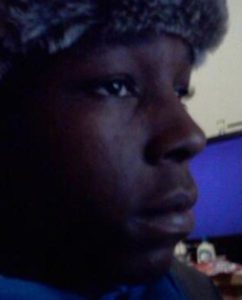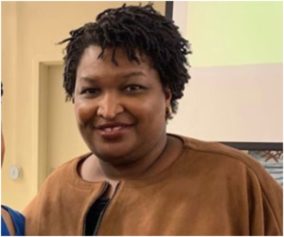
Panzy Edwards’ voice is deep and gruff, and yet it conveys deep love and compassion. That love rings loudly in her voice when she talks about her son, Dakota Bright, who was murdered on Nov. 8, 2012, by an unidentified Chicago Police Department officer. He was 15 years old.
Dakota was born on Feb. 21, 1997. Edwards was so thankful for his health at birth, as it was initially in doubt. “When I had him, I had complications with him the day I was in labor with him. His heartbeat dropped, the cord was wrapped around his neck. When he made it out, I was [so] happy,” says Edwards.
At the time of his death, Dakota was living his life like many other children in their early teens. He enjoyed playing video games and spending time with his friends. He got in the occasional fight at school, but he was not involved in any sort of illegal activity. He was an average boy.
“That little boy was happy. He always wanted to be near me,” Edwards says.
Edwards had four children, and Dakota was her second born — Dakota had an older brother and two sisters, with whom he was close. The family is from Englewood in Chicago, which has become notorious for youth violence and gang activity. The unfortunate nickname, “Chi-raq,” comes from the media’s portrayal of Englewood and like communities. The community is rough, but Dakota was not involved in any gang activity for which the neighborhood is known. Instead, he would frequently play the role of mediator at home with his siblings, as he aspired to be a lawyer.
“When my daughters would argue, he wouldn’t let that happen. He tried to convince me to let [my younger] daughter get away with stuff,” Edwards explains.
The young, aspiring lawyer loved to debate. He frequently would challenge his mother to go back to school, which she was not fortunate enough to finish, as a rebuttal to her when she would urge him to study.
“He really wanted me to go back to school. I was [going to] go back to school myself. I kept on saying I can’t get a good job. Dakota said, ‘How are you going to force me when you didn’t go,’” Edwards explains about her son’s sharp logic. Dakota was clever and thoughtful despite his lack of enthusiasm for school. He got average grades in school, never the A or B student, but he never struggled.
Dakota came home every day to play video games and did not spend much time playing sports because of his small stature.
“He was a short little thing,” says Edwards.
Dakota’s stature made him a target for bullying at school. He would frequently get jumped at school because of his Mohawk. “A lot of kids messed with him because he had a Mohawk. A lot of people made fun of his haircut because they say it’s gay,” Edwards states.
She would sometimes worry about this because of the prevalence of gun violence at Paul Robeson High School and in the area. In 2012, the year Dakota’s life would later end, some kids jumped him, and when the police arrived, instead of helping Dakota, they attacked him.
“The last fight was when he got jumped on and that’s when the police kicked his teeth in his face. They locked him up, and he was about 15,” Edwards says. Another student’s mother had called the police, to come to the Englewood neighborhood high school. Instead of alerting Dakota’s family about the fight at school, the police responded with violence and physically attacked Dakota, kicking his teeth out. This attack left Dakota distrustful of the police, as many targeted Black boys are on the South Side of Chicago.
Normally, Dakota would head home to his mother after school, but he would occasionally go to his grandmother’s before heading home. On Nov. 8, 2012, he had gone to his grandmother’s after spending time at a girlfriend’s home, where he was playing video games.
“He had called to ask me for $5—his father was incarcerated and his brother was incarcerated—so he called me,” says Edwards. He then left to head home. Dakota walked one way and his girlfriend walked another way.
Moments later, the girl called Edwards to alert her to the fact that she had heard gunshots in the direction that Dakota had walked. The girl asked, “Did Dakota come home?” Edwards tried calling Dakota, but there was no answer.”
“When I called that phone he answered that phone so I knew something was up. I got up and went over there. [The police] wouldn’t tell me nothing. Someone went over [to the scene] and said it was Dakota. I lost it,” Edwards says.
Dakota had a tattoo of his mother’s name and was immediately identified by a neighbor. Dakota was shot in the back of the head and left dead without any emergency response for approximately five hours. The CPD claims that Dakota was armed, pointed a gun at the officer and then ran away. However, a picture of Dakota lying dead shows him handcuffed. This is inconsistent with the CPD’s story that he pulled a gun on them.
Dakota shared everything with the woman who gave birth to him and raised him, whose name was tattooed on him, and she swears he never had any weapon. Edwards is honest and forthcoming about her children’s flaws, including her eldest son’s criminal background, and would say if her son had been carrying a gun. That would at least partially explain, not justify, but give some glimpse of an explanation of the officer’s pursuit of Dakota. Dakota was unarmed.
“I don’t know why they killed him. The officer said he was scared, but how was he scared? I don’t see how he was in defense of his life. To me, I think he was tired of chasing [Dakota]. He shot him in the back of the head,” Edwards says, as she chokes back tears.
There was a Ceasefire officer, Cure Violence gang mediator, out at the time of Dakota’s death, who saw a plainclothes officer bring a gun out to the scene hours after the officer’s pursuit of Dakota, while Dakota lay handcuffed and dead.
“They left him out for five hours. They flagged the ambulance away. They put down that he was put down at the hospital. No, he was taken straight to the morgue,” Edwards cries. At the time, Edwards could not bring herself to go identify the body herself. She was heartbroken.
The CPD will not name the police officer who killed Dakota, and no actions have been taken against him. He still serves Edwards’ community, which has left Edwards with no one to turn to when she is in need.
“I can’t get anything. When they put it on the news they said Dakota was a 20-year-old, known gang member,” Edwards says on the negligence of the media. The media portrayed Dakota as just another “gang banger.” They portrayed him as a monster, which he just wasn’t.
“He had teachers and his principal leave school, leave their work, to go to his funeral. No one would do that for a monster,” Edwards says.
Dakota was out of school the day of his murder because school security had sent him away because of how much he had been messed with by the other kids. They sent him home so he would be safe. Instead, he was murdered by the very people who take an oath to serve and protect the people.
“I don’t feel like my son should’ve run from the police, but he had just had his teeth kicked down his throat by the police,” Edwards says, referring to his prior attack at school.
Edwards was not as cognizant of police brutality prior to her son’s death but now notices it daily in Englewood. She calls the police presence in the low-income, isolated and predominantly Black community, “horrible.”
“Listen, I’ve seen the police pull over a boy because he had his hat on backwards. … They do so much to them. They slammed his head on the car,” she explains. Edwards cannot go down the street without seeing the police.
“I seen them slam a 10-year-old on the gate for cursing. It’s going to make [boys] disrespect y’all even more!” Edwards says with frustration.
When Edwards’ eldest son was released from prison, after Dakota’s death, he was arrested 30 times in his first two months out for such acts as riding his bike on the sidewalk. Edwards herself is harassed when she protests for justice for Dakota, wears shirts with his name on them and is in her car, which displays a bumper sticker in his honor.
“When they see people with the shirts, they ask, ‘Who are you to Dakota?’” Edwards explains.
Someone had set fire to Edwards’ car when I first spoke to her, and she refused to call the police, as she doubted whether they would do anything but cause more trouble for her. The first responders, the fire department, did not even show Edwards much compassion. They were hostile and judgmental. Edwards lives in a society that assumes the worst of her.
“The other day, I’m sitting outside my house. [The police] gave me a drinking ticket for sitting outside my house, not drinking, because I had a hoodie on with Dakota’s picture,” Edwards says.
The armed police even lined up at Dakota’s funeral and followed the family to the burial.
The family is still grieving daily. Dakota’s younger sister has struggled significantly. “They told me I have to get her in counseling because she has started fighting in school. When it first happened, I couldn’t contain her. They used to sit up and play together a lot. They went to school together. I think she might have been hurt more than the rest of them,” Edwards says.
One hears the pain and heartbreak in each and every one of Edwards’ words. She cannot understand her “vibrant” son’s injustice. Edwards has not been dealt the best hand in life, but she is cordial and thoughtful, just as she describes Dakota, and loving.
“When I cry, don’t tell me to stop or this and that or say it’ll be OK. I’m the one who heard that he wasn’t going to make it. Nobody knows how I feel. Y’all don’t know,” Edwards weeps.
Edwards has been out protesting for justice for Dakota since his murder two years ago. Yet, she feels hopeless that there will be any justice in Chicago — that her son’s life will matter to the CPD, that Black life will matter in Chicago.
“Nobody knows about my child. People don’t know about my child. … It is sad, and I see these pictures up and none of the people they flash up are my child. It’s sad for the boys in Chicago. [The police] gonna keep doing it and get away with it,” Edwards says.
She sighs, “He ain’t getting the justice his life deserves.”
Tess Raser, originally from Chicago, is a teacher in Brooklyn and an active member of the growing Black Lives Matter movement. She works with various groups, including We the People and the Stop Mass Incarceration Network.


